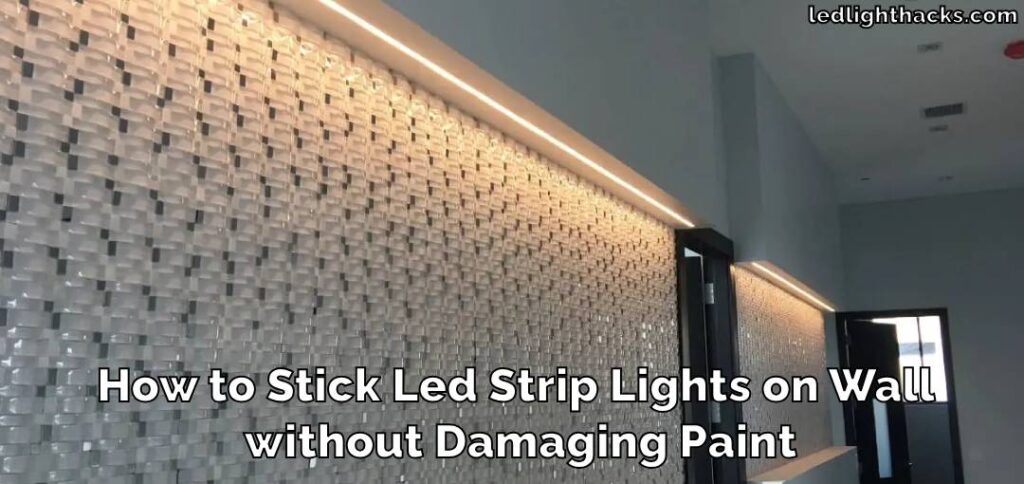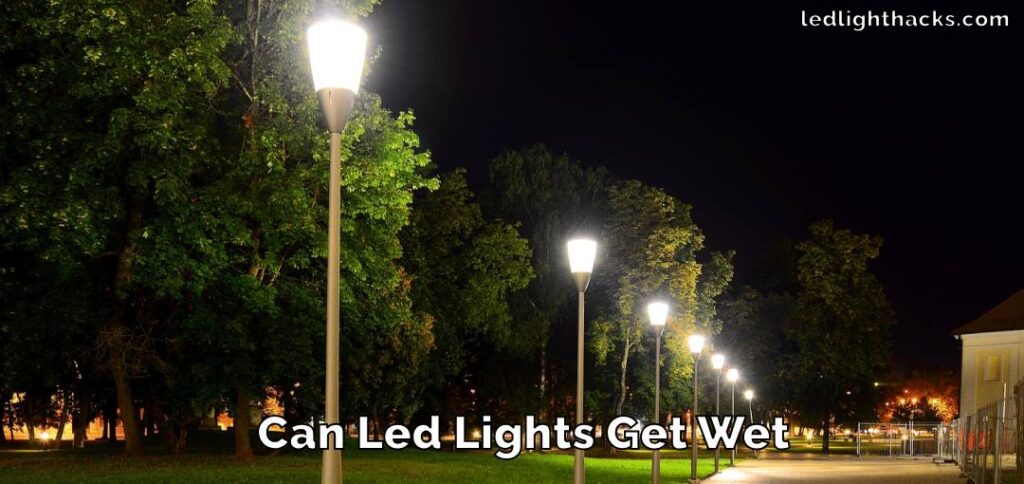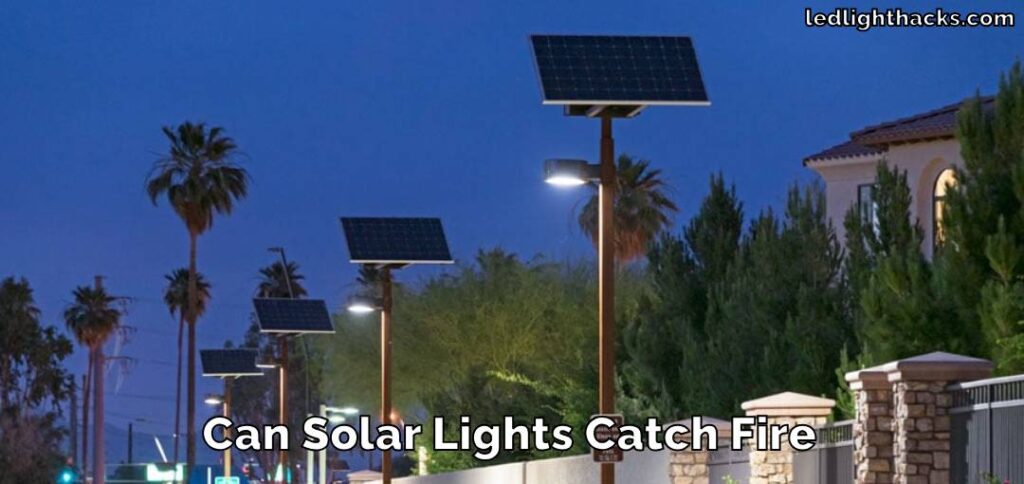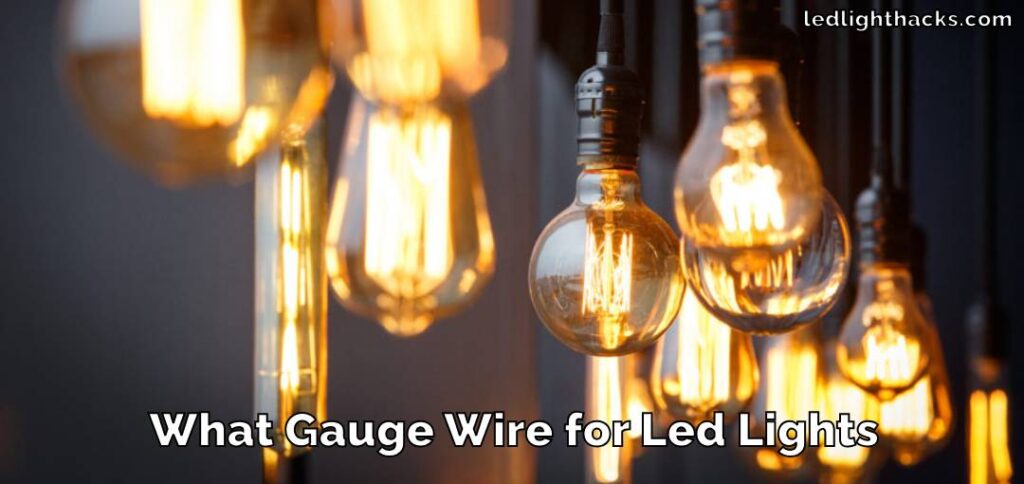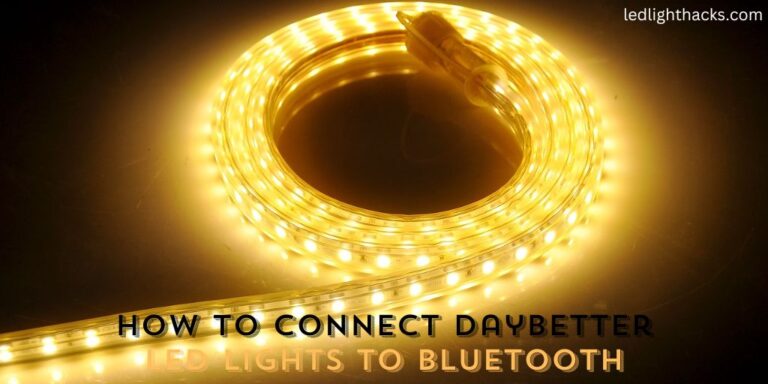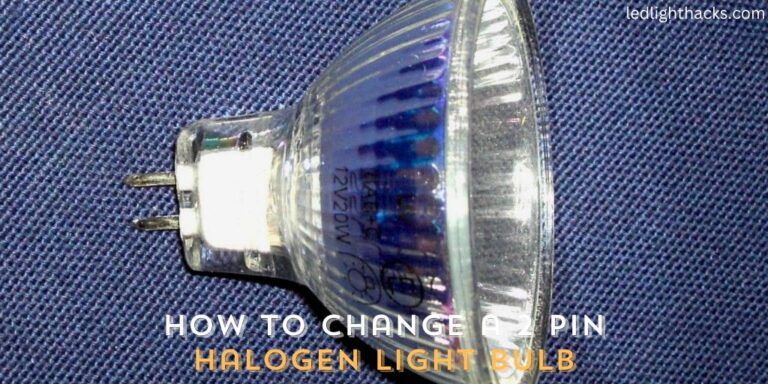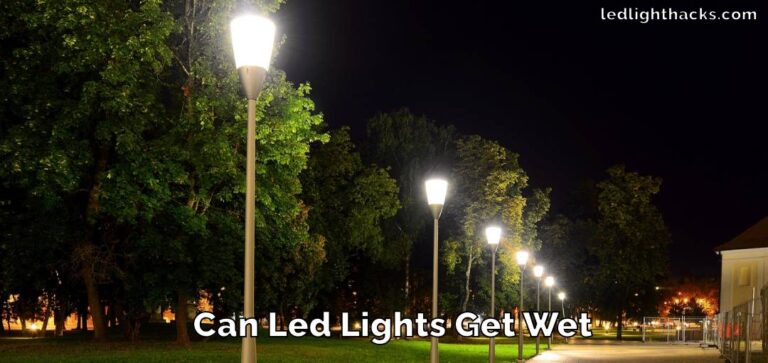How to Dim LED Lights Without a Dimmer
LED lights are a smart choice for lighting up your home because they save more energy and last longer than many old-style bulbs. One of the best things about LED lights is that you can adjust their brightness.
This means you can change the feel of a room and save even more energy, possibly even making the LED lights last longer. While many people think you need a dimmer switch to change the brightness of LED lights, there are actually other ways to get that soft light.
This guide will talk about why it’s good to dim your LED lights and show you how to do it without a dimmer switch.
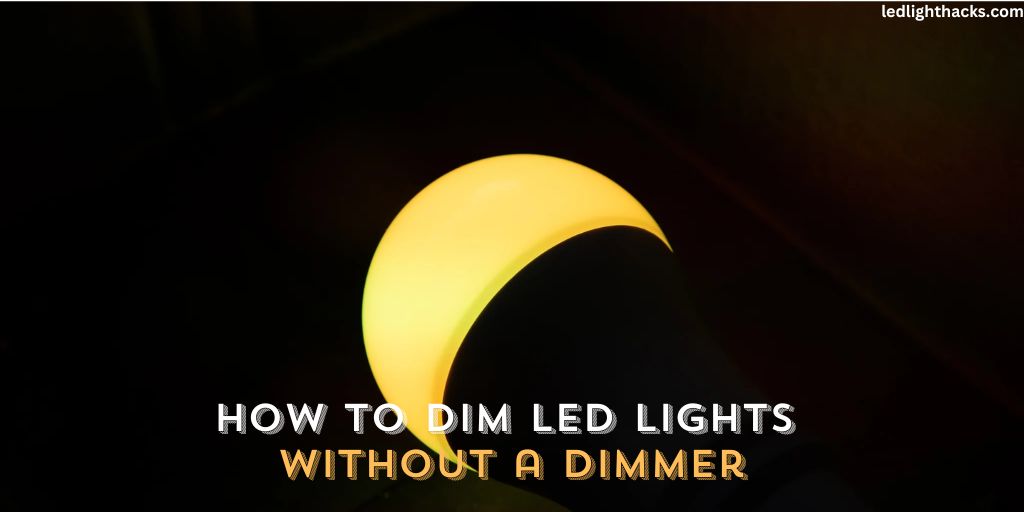
Dimming LED lights is not just about creating a certain look or feel in a room; it’s also practical. It can help you use less energy and might even help your LED lights last longer. Even if you don’t have a dimmer switch, there are still ways to achieve that cozy glow. Let’s dive into how you can do this.
Why You Should Dim LED Lights?
Energy Efficiency
Dimming LED lights is a smart move for anyone wanting to save on energy. When you lessen the brightness of your LEDs, they use less power. This not only means they’re more energy-friendly, but it also results in reduced electricity bills. Even a small decrease in brightness can add up to savings over time.
Extended Lifespan
LED lights, like other electronic items, have a certain life expectancy. LEDs that are dimmed generally produce less heat. Too much heat can wear out electronic components faster. So, by keeping your LED lights at a lower brightness, you help them stay cool, potentially extending their life.
Ambiance Control
The ability to change the brightness of your lights gives you more control over the feel of your space. You might want a soft light for a cozy evening or a brighter light for tasks. Adjusting LED brightness allows you to set the right tone for any situation.
Reduced Light Pollution
Bright lights in populated areas contribute to light pollution. This not only impacts our ability to see the stars but can also disturb wildlife. By dimming LED lights, especially those used outside, we can help lessen this type of pollution, making both nature and our nighttime views better.
Eye Comfort
Bright lights can sometimes be harsh on our eyes, particularly during nighttime or in darker settings. Reducing the brightness of LEDs can provide a more comfortable light level, reducing the chance of eye strain or discomfort.
Is It Possible to Dim LED Lights without A Dimmer?
Certainly! While many people associate dimming lights mainly with a dimmer switch, there are several other ways to decrease the brightness of an LED light. Some LED lights come with built-in settings that allow for brightness adjustments.
Additionally, there are practical methods, such as placing light-diffusing materials in front of the LED or using certain smart home systems that provide lighting control. These alternatives can be both effective and user-friendly, ensuring you have the flexibility to adjust light levels even if you don’t have a conventional dimmer switch installed.
Tools We Need to Dim LED Lights Without a Dimmer
Dimming LED lights without the use of a traditional dimmer switch might seem tricky, but with the right tools, it becomes a straightforward task. Here’s a list of items you might need:
- Neutral Density (ND) Filters.
- Frosted or tinted light covers.
- Resistors.
- Pulse Width Modulation (PWM) controller.
- Variable power supply.
- Appropriate wiring tools.
Having these tools on hand not only provides flexibility in controlling the brightness of your LEDs but also ensures you can achieve the desired lighting effect safely and efficiently.
How to Dim LED Lights Without a Dimmer
Dimming LED lights without using a standard dimmer switch is totally possible, and there are quite a few ways to do it. Whether you want just a bit less light or a much softer glow, here are some methods and steps to help you get there.
Neutral Density (ND) Filters
ND filters are special sheets that make the light less intense without changing its color. Here’s how to use them:
- Buy ND filters that fit your LED light size.
- Put the filter directly on the LED light.
- If you want more control over how bright the light is, you can add more filters or adjust them.

Tinted or Frosted Covers
These covers spread the light out, making it softer and less harsh.
- Look for covers that have the level of tint or frost you like.
- Replace the LED’s original clear cover with the tinted or frosted one you got.
- Turn on the LED to see the softer light.
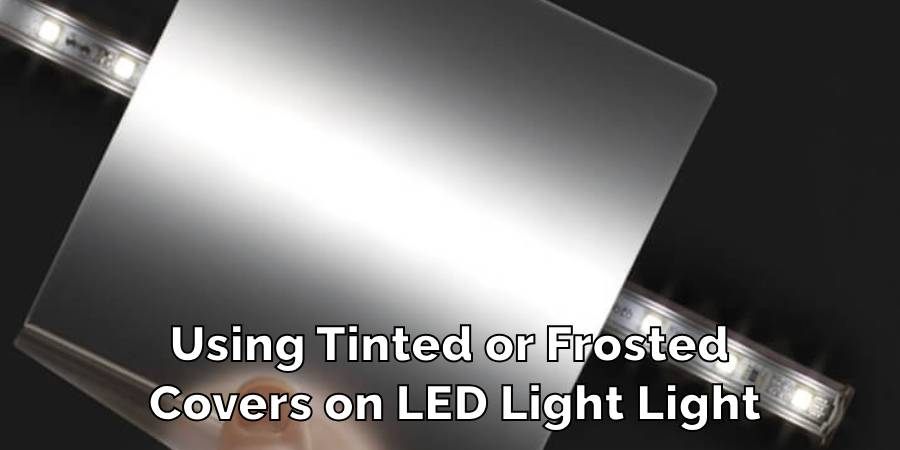
Use of Resistors
Resistors are used to reduce the electric current, which can make an LED less bright.
- Pick a resistor that matches your LED setup.
- Connect the resistor in series with the LED.
- When turned on, the resistor will reduce the current, dimming the light.
Pulse Width Modulation (PWM) Controller
This method gives you accurate control over the brightness by changing how long the LED is on during a cycle.
- Find a PWM controller that works with your LED system.
- Put the controller in the LED circuit.
- Adjust the controller to get the brightness you want.
Variable Power Supply
Adjusting the power going to the LED can change its brightness.
- Get a variable power supply that’s right for your LED.
- Connect the LED to this power supply.
- Change the voltage until you like the brightness.
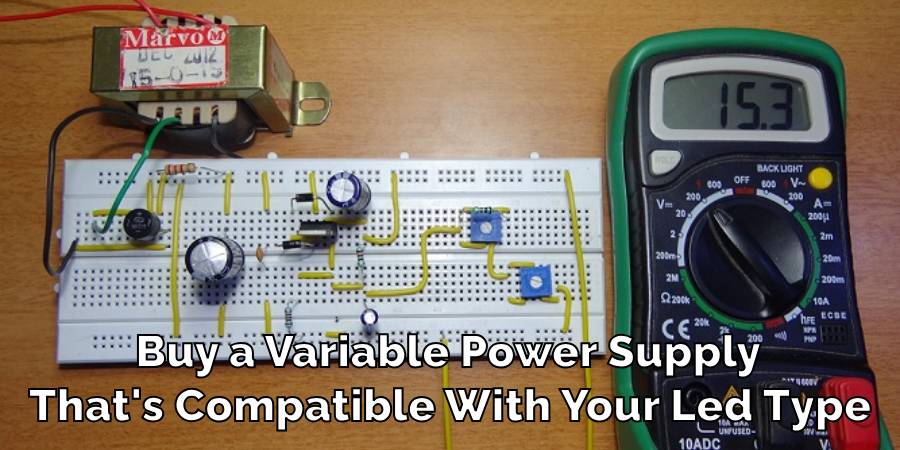
Blocking Some of the LEDs
If you’re using LED strips, you can cover some LEDs to dim the light.
- Decide which LEDs you want to cover.
- Use tape or LED blockers that don’t conduct electricity to cover them.
- Try to cover them evenly for consistent light.
Using Multiple Layers of Diffusion Material
Materials that spread out light can make it less intense.
- Choose a material like fabric or tracing paper.
- Put it in front of the LED.
- Add or remove layers until you’re happy with the light.
You don’t need a dimmer switch to control your LED lights’ brightness. With the right materials and a little effort, you can set your lighting just how you like it.
Precautions While Dimming LED Lights Without a Dimmer
Dimming LED lights without a traditional dimmer is a useful approach, but it’s essential to keep a few safety and performance considerations in mind to ensure optimal results and longevity.
Avoid Overheating
When using tools or techniques like resistors, it’s crucial to monitor the heat levels. LED lights and accessories can generate heat, and without proper heat dissipation, it can lead to premature failure of the LED or even potential fire risks. It’s a good practice to check for adequate ventilation and consider using heat sinks or other cooling methods if necessary.
Ensure Safety
Safety should always be a priority when working with electrical components. Before making any modifications or adjustments, ensure that the LED or the circuit is disconnected from any power sources. This simple step can prevent potential electric shocks and keep you safe during the process.
Avoid Excessive Dimming
While it might be tempting to reduce the brightness of an LED significantly, doing so might not be ideal for the light’s performance.
Dimming an LED too much can sometimes lead to flickering, or it might impact the overall lifespan of the light. It’s best to find a balance that offers the desired brightness without compromising the LED’s functionality.
Uniformity
Achieving a consistent light level is essential, especially if you’re aiming for a particular mood or aesthetic. When dimming, be mindful of how the light is distributed. Uneven brightness can result in unwanted shadows or spots that are brighter than others. Make adjustments as needed to ensure a smooth and uniform light output.
While dimming LEDs without a dimmer provides flexibility and customization, it’s vital to approach the task with care. By keeping these precautions in mind, you can enjoy the desired ambiance and ensure the safety and longevity of your LED lights.
FAQ’s
Is There a Way to Make My LED’s Brightness Lower Than the Lowest Setting?
Absolutely! While your LED light may have a minimum brightness level when used as standard, there are still techniques to bring that brightness down further. For instance, neutral density filters can be placed over the LED to cut down on the intensity of the light they emit.
Another method is by incorporating resistors into the LED circuit, which can reduce the current flowing to the LED and subsequently decrease its brightness.
Can You Dim LED Lights Without Using a Traditional Dimmer Switch?
Yes, you certainly can. While many think of dimmer switches as the primary method for controlling LED brightness, there are several alternative techniques. Neutral Density (ND) filters, for example, can be placed over the LED to reduce its brightness.
Resistors can be added to the circuit to limit the current and dim the light. Pulse Width Modulation (PWM) controllers can precisely control the LED’s on and off cycles, effectively reducing its average brightness.
And, if you’re looking for a simple solution, frosted or tinted covers can diffuse the light, reducing its intensity and giving a softer glow.
How Can I Make My LED Lights Emit a Warmer Glow?
The perceived warmth or coolness of light is measured in Kelvin (K). LEDs with a lower Kelvin rating emit a warmer, yellowish light, similar to traditional incandescent bulbs. If you prefer this kind of light, consider buying LEDs that have a lower Kelvin rating, often labeled as ‘warm white’.
However, if you already have LEDs and find their light too cool or stark, you can also use colored gels or filters. These are thin sheets of colored material that can change the hue of the light passing through them. Placing an amber or orange filter over a cool LED can give its light a warmer appearance.
Conclusion
Dimming LED lights offer various benefits, from energy conservation to ambiance enhancement. While traditional dimmers are one solution, multiple alternative methods can adjust LED brightness to suit your needs.
Whether you opt for technical approaches like resistors or simpler methods like frosted covers, you have a toolkit of options to achieve the perfect lighting atmosphere.
How to Change a Light Switch without Turning Off the Power
Mastering the skill of changing a light switch without turning off the power holds great…
How To Stick LED Strip Lights On Wall Without Damaging Paint
LED light strips have surged in popularity, adorning homes and spaces with their vibrant colors…
Can Led Lights Get Wet
LED lights are everywhere, from homes to city streets, known for their efficiency and brightness….
Creative Ways to Use LED Strip Lights in Your Home
LED strip lights, those brilliant strips of technology, serve as a beacon of innovation in…
Can Solar Lights Catch Fire
Solar garden lights are your go-to pal for lighting up your backyard oasis while keeping…
What gauge wire for LED lights
When diving into LED lighting, one aspect that might not catch your eye at first…


